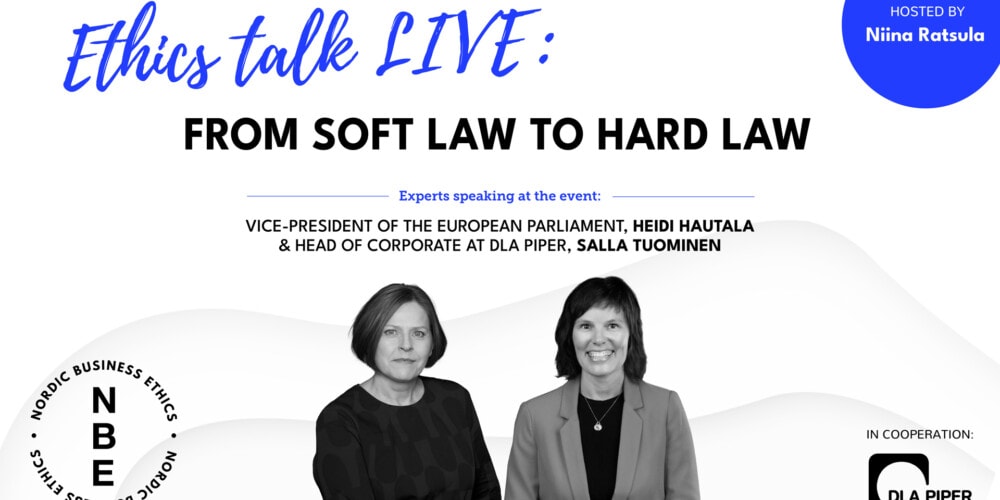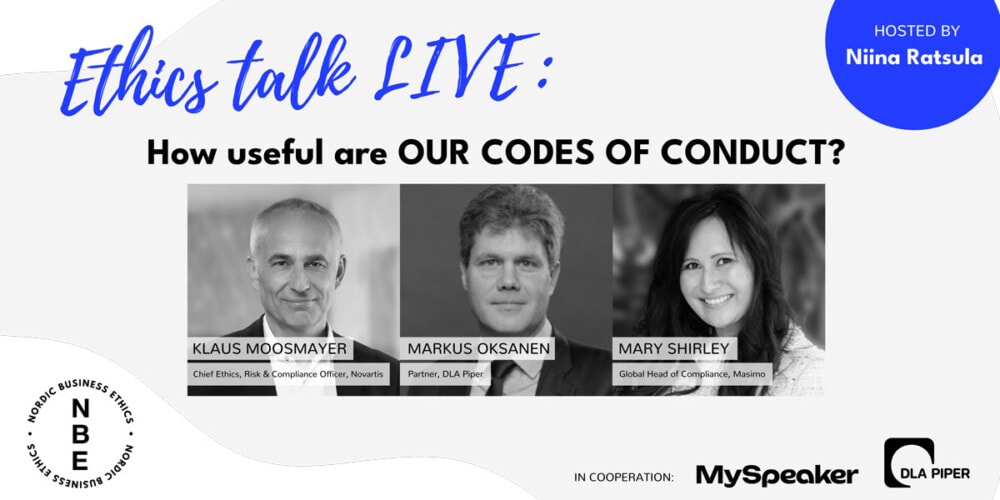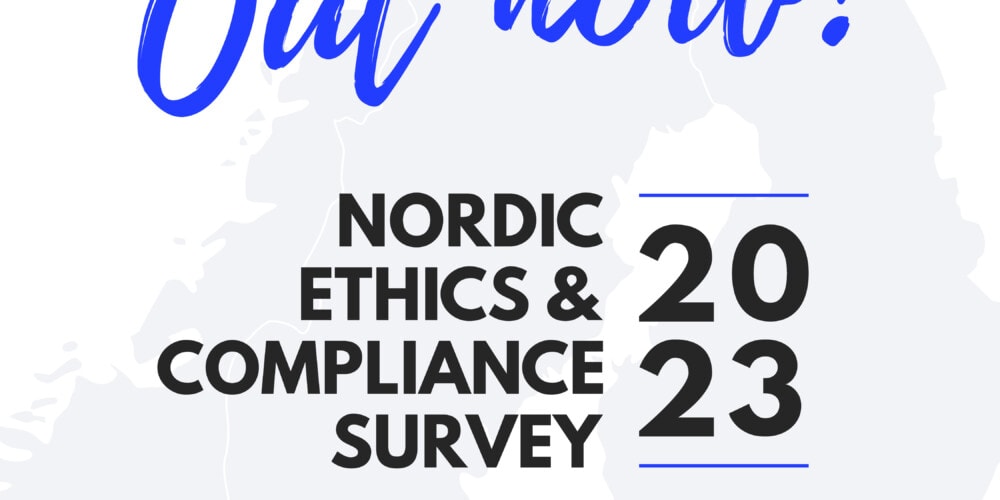Ethics Talk LIVE Exclusive with Richard Bistrong
EthicsTalk LIVE Exclusive with Richard Bistrong focused on Richard’s experiences as a sales executive, a former FCPA violator and FBI/UK Cooperator. Richard visited the studio for an honest discussion about lessons learned the hard way and the ethical dilemmas businesses and organisations face today. In addition to Richard, Patrick Rappo from DLA Piper shared his vast experience on enforcement, self-reporting and corporate settlements.
In this blogpost Richard, himself, answers 3 questions from the audience that we did not have time to go through in the event. Thank you for posting your questions!
1. Ethics and Compliance overlap. However, the same officer in the company could and should not handle Compliance and Ethics, or even ethics, compliance and legal. Don’t you think such combination creates so called “corporate cowards” instead of “courageous leaders”?
That is a good question but I think the answer depends on the organization- but from what I have seen, it is more than just the title and reporting structure that matter. It is empowerment of the ethics and compliance teams that tells a greater story. For example, do ethics and compliance leaders have the resources they need to scale their program and initiatives? Do they have unfettered access to the C-Suite, Board and business leaders. Do they have a ‘line of site’ into the business? For example, one of my clients reports to the General Counsel but also sits with the Audit Committee of the Board of Directors once a quarter without the CEO or GC present, to share quarterly ethics and compliance issues as well as challenges. As to having one officer handle ethics and compliance, again, I think that is related to the scale and challenges of the organization. We are just starting to see these roles separated, but not every company has the resources to split that function. However, I think your comment about combing ethics and/or compliance with the legal function is indeed more problematic. Legal roles and responsibilities, especially in listed companies, are far reaching, including public reporting obligations, possible merger and acquisition transactional work, among other corporate legal functions and litigation matters. Combining these corporate legal roles with the ethics and compliance function, as one team, can definitely lead to dilution and distraction from workforce and workplace ethics and compliance challenges. I am not sure that “corporate cowards” might be accurate, but it certainly might lead to “corporate blind spots!”
2. What’s the psychologically safe environment/context in which to raise an ethical concern. (How do we avoid getting to the single person coming forward as the whistleblower?)
As Amy Edmondson shares in her iconic work “The Fearless Organization,” we need to spark and empower a workplace and workforce that values “candor over comfort.” When we have a psychologically safe environment, the instinctive interpersonal fear of raising concerns or even errors, is replaced with a culture where raising red flags, including ethical concerns, is embraced. The challenge is that such a culture will not happen on its own. Leaders and managers need to be proactively reaching out to their teams with open ended questions like “what can I do to help you,” “are you facing any challenges where you might need guidance” and to do so continually. Such pro-active outreach and messaging that mistakes can be used as learning moments for the entire organization, is so critical to spark an environment where speaking up becomes the norm, and surfacing concerns, replaces the inherent fear of doing so. When we have such ’speak up’ cultures, as research demonstrates, “whistleblowing” becomes a last resort, as concerns that are either observed, or even confusion about our own decisions and dilemmas, are shared and not covered up. As one compliance client of mine shares with her commercial peers “the only problems I can’t help you with are the one’s you are keeping to yourselves.” That type of messaging on a frequent basis, is so critical to sparking and maintaining a psychologically safe environment.
3. Direct communication and contact with employees was limited in Covid times, employees are stil distant, out of sight out of mind. Which approach do you believe would be the best one to tackle the challenge?
That is such an important question and a time sensitive one, especially as we return to work after summer holidays and looking past COVID lockdowns. And I wrote exactly about this challenge in a recent article in FastCompany. I would look forward to your comments. As you can see by these three strategies, it is critical to be pro-active, especially in our hybrid environment. The forces of proximity bias are extremely strong, and we don’t want those who are working remotely, perhaps seeking to prove their ‘virtual value’ to their in-office peers, taking short, cuts, even well intentioned one’s. This is a topic of tremendous interest and I would welcome your comments to Richard@richardbistrong.com
Richard Bistrong can be reached at his website www.richardbistrong.com as well as Linkedin, twitter @richardbistrong and @instragram, so feel free to connect!
If you are interested in watching the webinar recording, please head over to Nordic Business Ethics’ YouTube channel.



